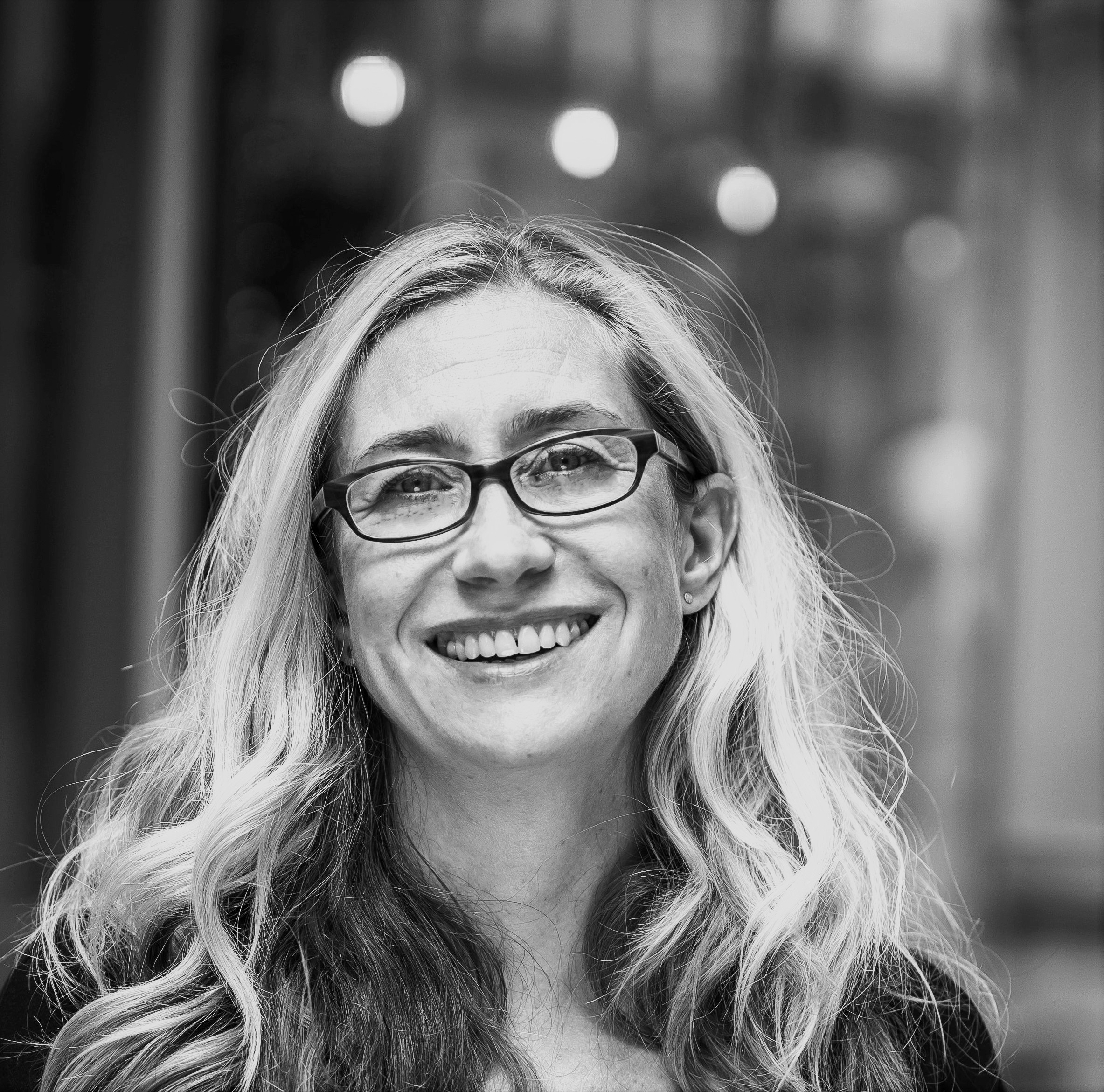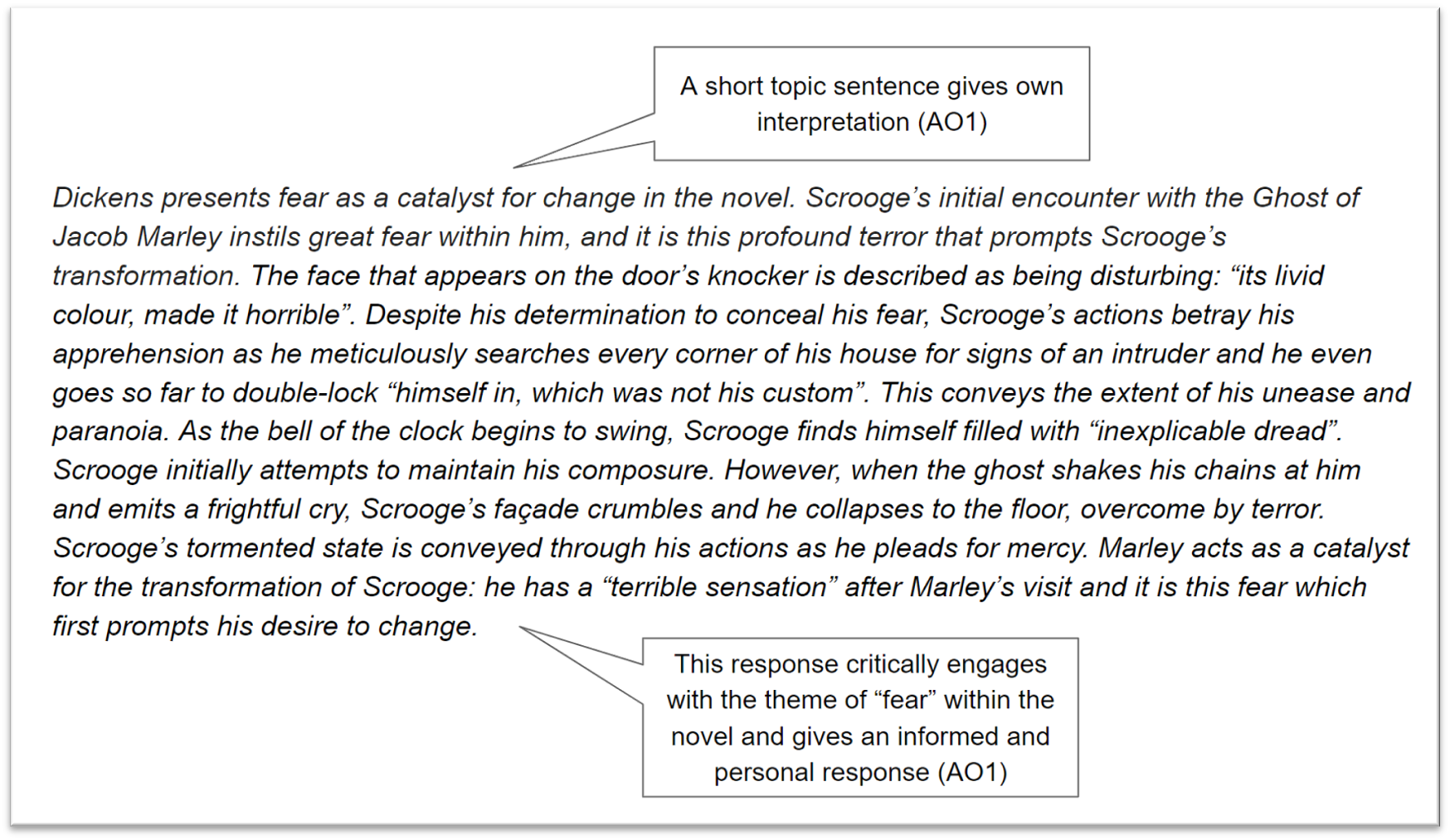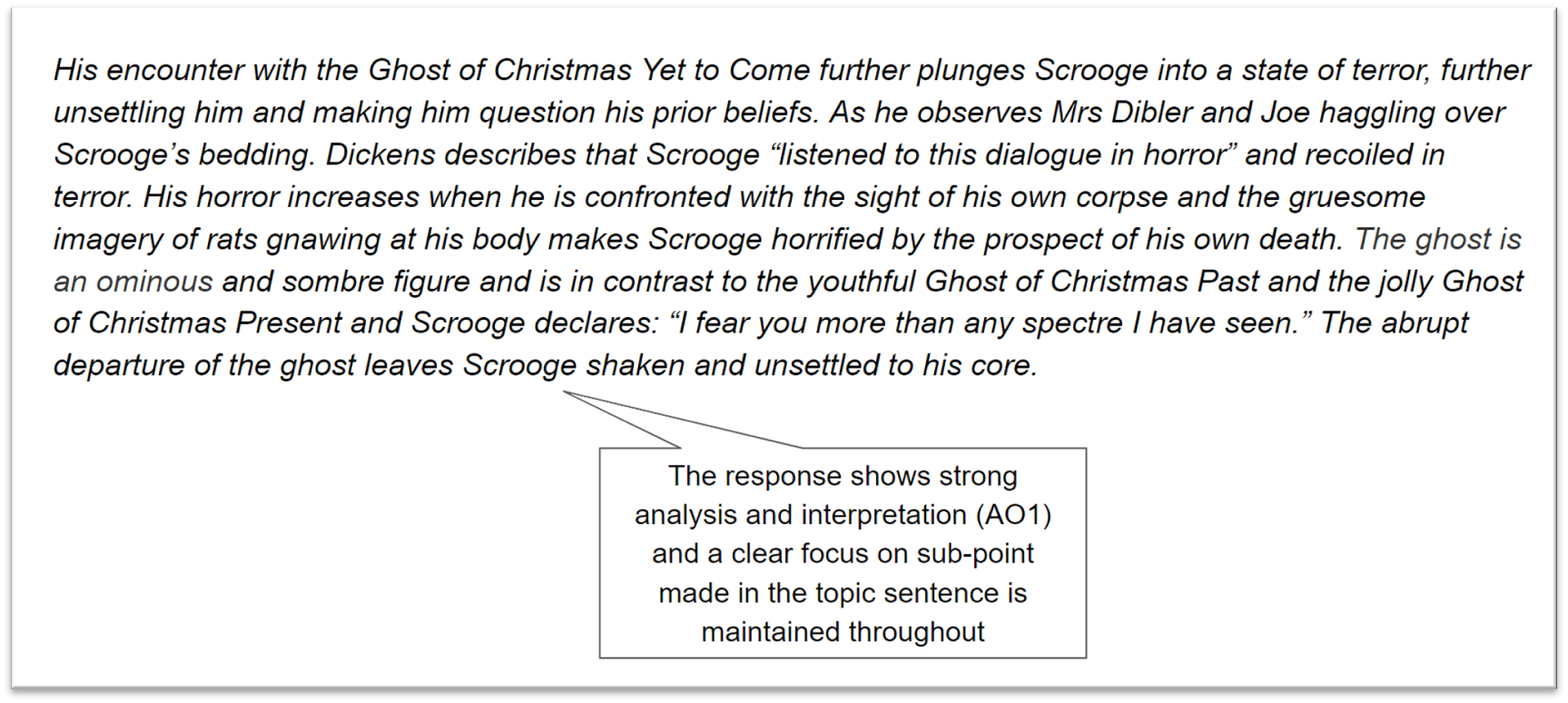|
Dickens predominantly presents fear in A Christmas Carol through his protagonist Scrooge. Scrooge is fearful of the supernatural, as evident through his encounters with the ghosts, but he is also fearful of change. Ironically, it is his fear of the supernatural which will inspire a change in him. Dickens also portrays fear through his employee Bob Cratchit, who, in contrast to Scrooge, is fearful of the consequences of poverty and illness.
Dickens presents fear as a catalyst for change in the novel. Scrooge’s initial encounter with the Ghost of Jacob Marley instils great fear within him, and it is this profound terror that prompts Scrooge’s transformation. The face that appears on the door’s knocker is described as being disturbing: “its livid colour, made it horrible”. Despite his determination to conceal his fear, Scrooge’s actions betray his apprehension as he meticulously searches every corner of his house for signs of an intruder and he even goes so far to double-lock “himself in, which was not his custom”. This conveys the extent of his unease and paranoia. As the bell of the clock begins to swing, Scrooge finds himself filled with “inexplicable dread”. Scrooge initially attempts to maintain his composure. However, when the ghost shakes his chains at him and emits a frightful cry, Scrooge’s façade crumbles and he collapses to the floor, overcome by terror. Scrooge’s tormented state is conveyed through his actions as he pleads for mercy. Marley acts as a catalyst for the transformation of Scrooge: he has a “terrible sensation” after Marley’s visit and it is this fear which first prompts his desire to change.
Similarly, Scrooge’s encounters with the Ghosts of Christmas Past, Christmas Present and Christmas Yet to Come all fill him with a deep sense of trepidation, which shock him into a state of self-reflection. Scrooge’s fear is heighted as he awaits the arrival of the Ghost of Christmas Past. The anticipation of the ghost’s visit weighs heavily on him and his anxiety and fear mounts as he nervously counts down the tolling bells of the clock. His fear intensifies when he feels himself suspended in mid-air and Dickens portrays his vulnerability. When the Ghost of Christmas Present first appears, Scrooge is commanded to gaze upon the ghost’s face. Despite his fear, Scrooge obeys, only to be shocked by what he sees. Their journey over the “fearful range of rocks” to the lighthouse further unsettles Scrooge as he is confronted with the reality of human suffering and deprivation through the characters of Ignorance and Want. At the sight of the children, Scrooge “started back, appalled” and he recoils in horror at their ghastly appearance. The fear of these visions spark Scrooge into reflecting on his life, and the choices he has made.
His encounter with the Ghost of Christmas Yet to Come further plunges Scrooge into a state of terror, further unsettling him and making him question his prior beliefs. As he observes Mrs Dibler and Joe haggling over Scrooge’s bedding. Dickens describes that Scrooge “listened to this dialogue in horror” and recoiled in terror. His horror increases when he is confronted with the sight of his own corpse and the gruesome imagery of rats gnawing at his body makes Scrooge horrified by the prospect of his own death. The ghost is an ominous and sombre figure and is in contrast to the youthful Ghost of Christmas Past and the jolly Ghost of Christmas Present and Scrooge declares: “I fear you more than any spectre I have seen.” The abrupt departure of the ghost leaves Scrooge shaken and unsettled to his core.
Dickens also depicts Bob Cratchit as a character who is also fearful of the consequences of poverty and illness. His fear of his employer permeates his work environment. He is too fearful to ask Scrooge for more coal to replenish his fire and instead tries “to warm himself at the candle”. The oppressive atmosphere of fear and intimidation by Scrooge leaves Bob feeling powerless and resigned to his fate. The fear of losing his job looms large in Bob’s mind and it compels him to work long hours for meagre wages. He is too afraid to assert his rights or voice his grievance for fear of the repercussions. Further, Bob and his wife live in constant fear for the health and well-being of their son, Tiny Tim. Their inadequate income leaves them unable to afford the necessary medical care that could alleviate Tim’s suffering. Towards the end of the novel, Scrooge is deeply moved by their plight and similarly shares their fears for Tiny Tim’s health and extends a helping hand.
Throughout A Christmas Carol, Dickens presents fear as an agent for change in Scrooge, while for the character of Bob Cratchit, it serves to imprison him in his unfortunate circumstances. However, once Scrooge has undergone his transformation, he too shares Bob’s fears, and both are the better for it.
|







